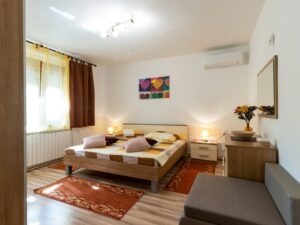Carpet flooring acts as a natural insulator thanks to air trapped in its fibers and underlying padding, offering an R-value comparable to fiberglass. It can reduce heat loss through floors—commonly accounting for 10–20% of home energy loss—and may save 8–13% on heating and cooling costs depending on climate and carpet type.
When I talk to homeowners about energy savings, most think about windows, insulation, or HVAC systems. Few realize that carpet underfoot can make a real difference, too. And I’m not just talking comfort—carpet and its cushion act like a thermal barrier, helping to keep your house cozy and your energy bills lower.

Carpet Provides Real Thermal Resistance
According to the Carpet & Rug Institute, wall-to-wall carpet with cushion increases the R-value—or thermal resistance—of a floor substantially. Shaw Floors cites Johns Manville lab tests showing that carpet with pad can deliver 3 to 17 times the insulation of hardwood, laminate, or tile, depending on carpet construction. Heavier carpets and properly installed cushion yield the greatest insulating benefit. (Costco Shaw Floors, Shawfloors)
Comparable to Fiberglass Insulation
Australian and other international testing reports suggest that carpet’s R-value per inch can rival fiberglass insulation—roughly 0.18 m²·K/W for a 1 cm (⅓ in) carpet, compared to fiberglass’s R‑value of about 0.22 in the same thickness. (Carpet Institute) That’s right—your carpet can perform like mini insulation panels across your floor.
Real Energy Savings Backed by Research
Research by Ege Carpets and Wool industry studies, including work by Wools of New Zealand, show that a well-installed carpet can reduce heating and cooling energy usage by 8‑13%. In modeled rooms, thicker pile carpets with proper underlay cooled or heated homes more efficiently, translating to real cost savings on utility bills. Wool carpet specifically helped households save around 8–13% on HVAC usage. (Ege Carpets Blog, ResearchGate)
Why It Feels Warmer—and Really Is
Carpet’s thermal insulation isn’t just scientific—it’s tactile. Dr. Alan Hedge of Cornell noted that carpet actually feels warmer underfoot because it traps insulating air at skin-level and has low thermal diffusivity. Essentially, carpet holds onto body heat instead of pulling it away like tile or wood would. (Costco Shaw Floors)
How Foot Traffic and Pile Height Matter
The thicker and denser the carpet pile—and the better the padding—the higher the insulation value. Plush or deep-cut pile carpets hold more air and provide better resistance to heat flow than thin loop or low-pile styles. Paired with a quality pad, they create a significant buffer against floor heat loss. (Ege Carpets Blog)
Measure Up: How Carpet Compares to Hard Floorings
By some estimates, carpet has around 4 to 10 times the R-value of hardwood, laminate, or tile. That means where hard surfaces let heat drain quickly, carpet slows the loss—keeping rooms warmer, longer—even after the heater turns off. In uninsulated floors, carpet coverage can cut energy loss through the floor by up to 20%. (Carpet Your Life, normansfloorcovering.com)
Certainly! Here are four additional benefits of carpet flooring as insulation, expanding on the post:
Noise Reduction Along With Thermal Comfort
While carpet is excellent for trapping heat, it also doubles as a sound insulator. That thick pile and padding don’t just stop heat from escaping—they absorb footsteps, echoes, and ambient noise. Especially in multi-story homes or apartments, carpet helps create a quieter and warmer environment simultaneously. It’s a two-for-one deal in terms of insulation benefits.
Temperature Regulation Between Floors
In homes with multiple stories, carpeted upper floors help prevent heat from rising too quickly, keeping upper levels from becoming stifling while allowing lower floors to stay warmer. This more even distribution of temperature cuts down on constant thermostat adjustments and helps HVAC systems work more efficiently.
Added Protection Against Cold Subfloors
In older homes or those with concrete slab foundations, floors can feel cold year-round. Carpet acts as a thermal barrier between you and those icy surfaces, especially in basements or first-floor living areas. Even a basic carpet-and-pad combo helps buffer against the cold creep from below, improving comfort without cranking up the heat.
Contributes to Sustainable Living Goals
Carpet’s insulating properties can contribute to green building goals by reducing your household’s overall energy consumption. When paired with other eco-friendly design choices, carpet helps improve your home’s energy rating. In fact, carpet made from recycled materials or natural fibers (like wool) can deliver insulation and sustainability in one go.
Final Thoughts: Carpet Isn’t Just Cozy—It’s Smart
Installing carpet isn’t just about feeling luxurious—it’s also about improving thermal comfort and waving goodbye to drafty floors. If you’re in a chilly climate or want to cut heating bills without ripping up your budget, carpet—and especially the right pile and pad combo—can be an energy-saving ally.





